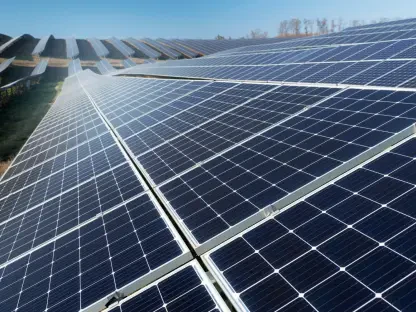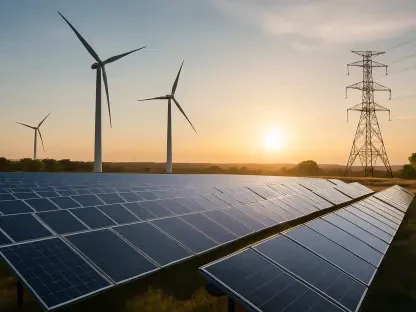In a world increasingly focused on combating climate change, educational institutions are stepping up to play a pivotal role in promoting sustainable practices, and one such trailblazer is making headlines in Mumbai, Maharashtra. Whistling Woods International (WWI), a renowned institute for Film, Communication, and Creative Arts, has embarked on an ambitious journey by commissioning a 1,095 kWp ground-mounted captive solar power plant on its campus. This bold move, developed through a strategic partnership with a leading renewable energy firm, showcases the institute’s dedication to environmental stewardship while continuing to excel in creative education. Expected to produce around 1.5 million units of clean electricity each year, the solar facility will meet nearly 80% of the campus’s energy demands with renewable power. This initiative not only reduces reliance on fossil fuels but also sets a powerful example for other educational bodies and industries to follow in embracing green technology.
Pioneering Sustainability in Education
The decision by Whistling Woods International to integrate solar energy into its campus operations reflects a broader vision of aligning education with environmental responsibility. Leadership at the institute, exemplified by President Meghna Ghai Puri, has articulated a mission that extends beyond providing world-class training in creative arts. The focus is on nurturing responsible global citizens who understand the importance of sustainability. The solar power plant stands as a concrete manifestation of this ethos, offering students and faculty a real-world example of how renewable energy can be woven into daily operations. Moreover, this project sends a strong message to the media and entertainment sectors, industries often criticized for high energy consumption, that sustainable practices are both feasible and impactful. By taking this step, WWI positions itself as a leader not just in education but in advocating for a greener future across interconnected fields.
Beyond its symbolic value, the solar initiative at WWI is a practical demonstration of how educational institutions can inspire systemic change through actionable measures. The partnership with a renewable energy expert has enabled the seamless execution of this large-scale project, ensuring that the technology is both efficient and tailored to the campus’s needs. This collaboration highlights the importance of combining expertise in education with technical innovation to achieve sustainability goals. Students at the institute gain firsthand exposure to renewable energy solutions, which can influence their perspectives and future contributions to their respective industries. The project also serves as a reminder that sustainability is not a distant ideal but a tangible goal that can be achieved through deliberate planning and commitment, encouraging other academic bodies to explore similar pathways toward reducing their environmental footprint.
Environmental Impact and Broader Implications
One of the most striking aspects of WWI’s solar power project is its profound environmental impact, which extends far beyond the campus boundaries. The clean energy generated annually is equivalent to taking 260 cars off the road or planting 54,000 trees, offering a vivid illustration of the project’s ecological benefits. Additionally, the initiative is projected to cut CO₂ emissions by more than 1,200 metric tons each year, making a substantial contribution to the global fight against climate change. These figures underscore the potential for educational institutions to drive meaningful environmental progress when they adopt renewable energy solutions. WWI’s efforts highlight a growing recognition within academic and creative sectors that operational choices can significantly influence broader sustainability outcomes, setting a benchmark for others to emulate in their own contexts.
Equally important is the framework under which this solar project was implemented, known as the Group Captive Open Access model. This innovative approach allows large energy consumers like WWI to directly source renewable power, providing a scalable and efficient method for transitioning to clean energy. The model not only supports the institute’s long-term sustainability objectives but also offers a replicable blueprint for other organizations, whether in education or other fields. By embedding environmental responsibility into both its operational strategies and educational curriculum, WWI ensures that students are exposed to sustainable practices as part of their learning journey. This dual focus amplifies the project’s impact, as it prepares the next generation of creative professionals to prioritize eco-friendly solutions in their careers, potentially transforming industry standards over time.
Setting a Precedent for Future Green Initiatives
Reflecting on the successful rollout of the solar power plant at Whistling Woods International, it’s evident that this endeavor marked a significant milestone in blending sustainability with creative education. The collaboration with a dedicated energy partner proved instrumental in achieving impressive environmental outcomes, such as substantial reductions in carbon emissions and a shift toward renewable power for campus needs. This project demonstrated that large-scale green initiatives could be both practical and impactful when driven by a clear vision and supported by technical expertise. The institute’s commitment to covering a major portion of its energy requirements with clean power stood as a testament to what could be accomplished through innovative thinking and strategic alliances.
Looking ahead, the success of this initiative paves the way for other institutions to adopt similar renewable energy models, potentially transforming how educational and creative sectors approach sustainability. Exploring funding opportunities for green infrastructure, integrating environmental studies into curricula, and fostering partnerships with energy innovators are actionable steps that can build on WWI’s example. Additionally, policymakers and industry leaders might consider incentivizing such projects to accelerate the transition to clean energy across diverse fields. The legacy of WWI’s solar project lies in its ability to inspire and guide future efforts, proving that sustainability is an achievable priority for any organization willing to invest in a greener tomorrow.









